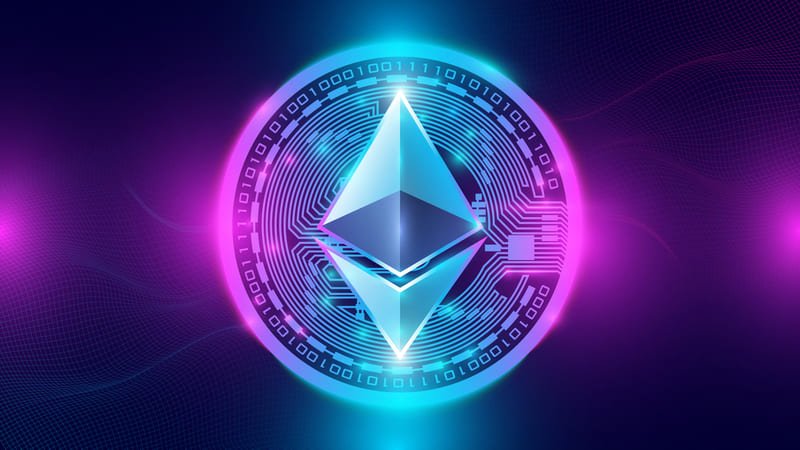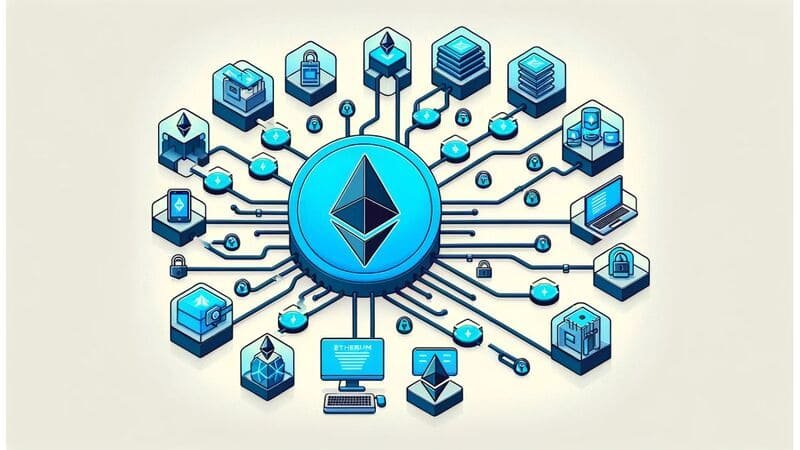📧 mithvin@gmail.com
📞+91 900 608 4701


People all around the world are in a rush to transit in the new era of Web 3.0 to experience the best internet accessibility. However, many DApp developers, enterprises, and opportunistic businesses have already been part of it to leverage its advantages as the era is backed by blockchains, dApps, smart contracts, and more innovations.
Surprisingly, around 300 million blockchain users are there around the globe, which is less than 4% of the worldwide population. Ethereum is the pioneer among the top decentralized platforms that have eased business transactions with secured blockchain technology and loads of features.
However, when it comes to settlement, people often overlook Ethereum and search for alternatives. What may be the possible reasons behind this? How are the rivals attracting people to adopt their platform for transactions and settlements?
Well! Be with us till the end of this article to unveil the hidden secrets with detailed insights. We will explore the expectations of businesses with settlements. We will also discuss the limitations of Ethereum based on factors like gas fees, ease of use, scalability, and much more.
Ethereum is a blockchain protocol that was introduced recently in 2013 by Vitaly Dmitrievich Buterin, who is a co-founder. It is an open-source platform that allows developers to create decentralized applications such as DeFi with smart contract functionality. It also allows trading and exchanging NFTs (Non-fungible tokens) on the platform. Ethereum offers a robust platform to create innovative DApps, managing fast transactions with data anomalies.

With the highest number of blockchain users (160 million) in Asia, followed by European (38 million) and African (32 million) countries, Ethereum is the most popular decentralized blockchain platform. The revolution of Ethereum started from the execution layer, namely Eth1, and then turned to the consensus layer, namely Eth2.
Later, in 2018, the protocol was further upgraded from PoS (Proof of Stake) to PoW (Proof of Work), known as The Merge or Ethereum 2.0. With this enhancement, Ethereum achieved success with a 99.95% energy reduction that contribute to a green environment and lower gas fees.
Ethereum is a Layer 1 blockchain associated with Layer 2, Layer 3, and DA (Data Availability), along with several other components and mechanisms. Let’s quickly understand the role of the four layers associated with blockchain architecture and the Ethereum network.
Solutions like Optimistic Rollups, ZKPs (Zero Knowledge Proofs), Plasma, Polkadot, Uniswap, OpenSea, and Lido altogether allow Ethereum to offer a strong and reliable ecosystem to users. It helps with secure, flexible, and efficient operations for dApp developers and businesses to begin the journey with Web 3.0.
Now, you must be wondering, as Ethereum is already offering remarkable and secure features, why is there a need to look for alternatives? Why are people shifting to other blockchain protocols? What does Ethereum lack in, forcing people to shift towards modern blockchain platforms?
Well! Don’t be overwhelmed; let us introduce you to the advantages and downsides of Ethereum. It will help you better understand the needs and demands of brainy developers and growing enterprises. You will also understand if the Ethereum community matches their expectations.
Undoubtedly, Ethereum has been the early bird in blockchain technology and has made the stronghold to offer a robust solution to creative developers. It is speedily growing the user base while staying intact with security and decentralization to maintain anonymity. Being the first smart contract network and the world’s second-largest digital asset platform, followed by Bitcoin, it is the first choice of dApp developers to explore their imagination.

At present, Ethereum can manage an average of 27 TPS (Transaction Per Second), and The Merge is also at its beginning stage, which might take years to make it fully functional. Recently, in March 2024, Ethereum implemented EIP-4844 (Proto-DankSharding) to leverage the functionality of data availability at L2. It is used to manage off-chain transactions without sending frequent data sets to the base layer. It helped the Ethereum blockchain protocols with Blob carrying transactions and increased gas limits. This way, the gas fee can be reduced as it sends bundled data collectively back to the L1 instead of operating directly on-chain.
The effectiveness of EIP-4844 concludes its impact on consensus security, Ethereum usage, and roll-up transactions. Block delays, increased fork rates, and increased posting delays are a few consequences you can encounter with Ethereum networks, followed by EIP-4844 implementations. It significantly increased the risk of data security and anonymity to Ethereum with the vulnerability to the consensus layer.
The prime reasons to transition to blockchain technology are to increase the transaction speed, save time, simplify managing huge amounts of data, and secure the identity and information to prevent vulnerability. If a decentralized platform offers data security and scalability in a place, it eases your shift towards a modern and efficient solution. Unfortunately, Ethereum is still at the beginning stage of providing scalability to businesses and decentralized app developers. Even though it has robust security, settlements take time as all of their roll-up transactions are finalized at mainnet in the form of CellData. It increases the waiting time for validation, results in increased gas fees, and is prone to data availability and security risks.

Consensus mechanisms, Rollups, and ZK rollups offer low transaction costs, integration compatibility, energy efficiency, and high-speed operations. Polygon PoS, Polygon zkEVM, Optimism, Arbitrum, zkSync, Aztec, and Hermez Network are a few popular alternatives that can ease your settlements in terms of programmable transactions, smart contracts, and consensus mechanisms.
Scalability can be significantly increased when you get high transaction speed without data breaches and concern for your important details. Thus, people dealing with large amounts of databases and huge numbers of transactions every day, as well as being focused on user experience, are shifting toward Ethereum rivals that are based on modern blockchain technology and backed with secured Layer 2 solutions.
Blockchain is a decentralized technology that works to encrypt information in the form of blocks followed by chronological order. The technology offers secured and immutable transactions without system failures as it works on nodes and smart contracts.
The top three benefits of using blockchain technology are;
The five important components of Ethereum are;